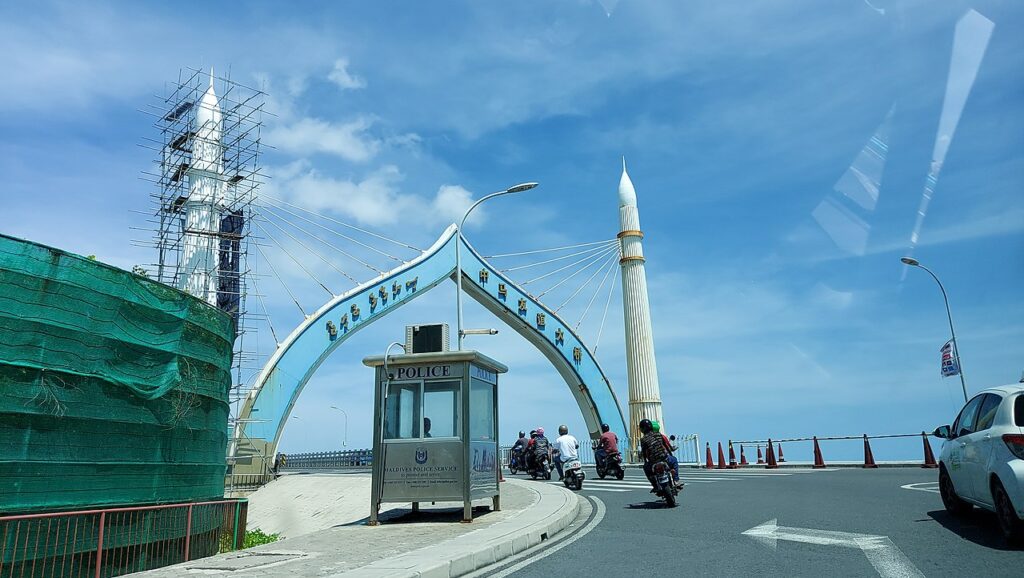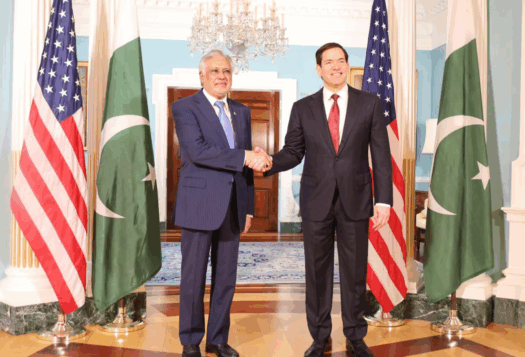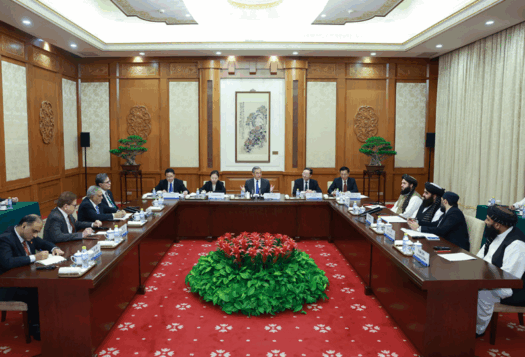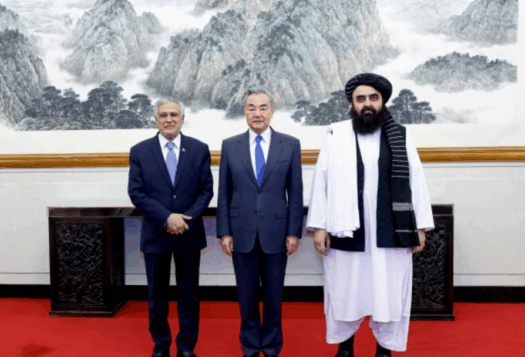
In January 2025, the Maldivian foreign and defense ministers made high-profile visits to New Delhi. Occurring against the backdrop of an administration that initially rose to power on an anti-India platform, these visits signal a striking recalibration of Maldivian foreign policy. Not long ago, anti-India rhetoric dominated the discourse of the government led by Maldivian President Mohamed Muizzu, leading to a sharp decline in Indian tourist arrivals and strained bilateral relations. Today, the tone has shifted completely, with the Maldives actively seeking to rebuild trust with its traditional neighbor amid an economic crisis.
In recent years, the Maldives has felt compelled to execute several such reversals in its foreign policy as it has tried to navigate competition between India and China. The Maldives’ unique geography and economic structure make it vulnerable to external geopolitical pressures. In order to successfully navigate between Beijing and New Delhi without compromising its sovereignty, Malé should establish clear communication with the two major powers about the unique roles that they play in achieving the Maldives’ strategic objectives. Additionally, it should also cultivate stronger ties with other partners in Southeast Asia and beyond and diversify its economy in order to promote greater self-sufficiency.
A Rejuvenated Relationship With India
Maldivian Foreign Minister Abdulla Khaleel’s visit to India in early January was a significant opportunity for the Muizzu administration to close the chapter on hostilities with New Delhi, which had been visible for much of the latter half of 2023 and the first half of 2024.
During the early days of Muizzu’s administration, anti-India rhetoric had peaked, exacerbated by controversial comments by three Maldivian ministers who had mocked Indian Prime Minister Narendra Modi. This had led to calls in India for a boycott of Maldivian tourism, resulting in a significant drop in Indian tourist arrivals. Initially defiant, Muizzu had accused India of being a bully. However, as the Maldives faced a fiscal crisis, and China’s support failed to materialize, the government softened its anti-India rhetoric and sought assistance from New Delhi. India then responded positively, extending rollovers to repay a treasury bond.
The rapprochement bred by this economic overture became evident in later months. During a visit by Jaishankar in August 2024, Muizzu described India as “one of the closest allies”. Muizzu also secured resignations of the officials who had insulted Modi. Efforts in the Maldivian Parliament to review defense pacts between India and the Maldives have also since stalled, suggesting that the Muizzu government wants to avoid antagonizing India.
In order to successfully navigate between Beijing and New Delhi without compromising its sovereignty, Malé should establish clear communication with the two major powers about the unique roles that they play in achieving the Maldives’ strategic objectives. Additionally, it should also cultivate stronger ties with other partners in Southeast Asia and beyond and diversify its economy in order to promote greater self-sufficiency.
These mitigative efforts helped Khaleel advance discussions on economic stabilization, trade, and regional security on his recent visit to India. India’s continued economic support — particularly the USD $400 million currency swap extended by New Delhi in 2024 — was a major topic at the high-level meeting. This assistance was instrumental in easing the Maldives’ fiscal challenges and highlighted India’s role as an economic partner in times of crisis. Both sides also deliberated on the operationalization of a local currency settlement agreement, aiming to reduce dependency on foreign currencies. Khaleel emphasized that this mechanism would enhance cost-effective trade and payment systems, fostering deeper bilateral economic ties. Additionally, Khaleel also acknowledged the importance of India’s role in maintaining stability in the Indian Ocean and expressed the Maldives’ commitment to regional peace and security.
Days later, Maldivian Defense Minister Mohamed Ghassan Maumoon arrived in New Delhi on an official visit — the first visit by a Maldivian defense minister to India since Muizzu took office. Maumoon engaged in discussions with Indian Defense Minister Rajnath Singh on enhancing the capabilities of the Maldives National Defense Force (MNDF) through joint exercises and ensuring maritime security efforts. This marked a shift from the Muizzu administration’s earlier policy of expelling Indian troops who had been stationed in the Maldives to maintain and operate rescue and reconnaissance aircraft. More broadly, both nations are now signaling their intent to build a robust and resilient security architecture in the region, as outlined in the Vision for Comprehensive Economic and Maritime Partnership declared by Muizzu and Modi in October 2024. While Maldives signed a defense pact with China in 2024, Maumoon’s recent visit to India indicates that Muizzu hopes to balance the island’s military ties with the two major powers.
Understanding the Maldives’ Policy Swings
Although India has traditionally been a closer ally, Maldivian foreign policy has gotten entangled in the India-China rivalry in recent years. This entanglement was initiated when the Maldives joined the Belt and Road Initiative (BRI) in 2014. Perceiving China’s growing presence in the Maldives as a challenge to its regional influence, India adopted a carrot and stick approach toward the then Maldivian President Abdulla Yameen. This dynamic marked the beginning of rising tensions between the two neighbors. Subsequently, India has repeatedly raised concern over Chinese involvement in the Maldives, especially when Chinese vessels have docked in Malé, a few kilometers away from an Indian-developed naval harbor.

Successive administrations in the Maldives have since oscillated between India-friendly policies and alignment with China. These swings in policy have been necessitated by the Maldives’ economic deficiencies and a changing geopolitical environment. Heavily reliant on external support, the Maldives has been struggling to navigate the competing interests of two very powerful neighbors while safeguarding its own sovereignty and stability.
The Maldives’ reliance on external powers is deeply rooted in its unique vulnerabilities. As an archipelago, the Maldives’ fragmented geography and its exposure to climate risks limit the nation’s capability for self-sufficiency. Economically, the Maldives is heavily reliant on tourism, which accounts for 70 percent of the country’s GDP. The country also lacks robust domestic industries such as large-scale manufacturing or agriculture, thereby compelling it to rely on imports. This lack of diversification leaves the Maldives highly susceptible to external shocks, as seen by the impact of the COVID-19 pandemic, and to some extent, the Ukraine-Russia conflict in 2022.
In recent years, China has accounted for a substantial portion of foreign direct investment and infrastructure development in the Maldives. Following the Maldives’ inclusion in the BRI in 2014, Beijing has backed projects like the China-Maldives Friendship Bridge in the capital city of Malé, major upgrades to the Velana International Airport, and numerous housing complexes. Chinese imports to the Maldives have also grown year on year, going from around USD $320 million in 2021 to over USD $400 million in 2023. In 2025, both countries activated the China-Maldives Free Trade Agreement. Many observers worry that this trade deal would make the flow in goods one-directional, result in the potential loss of customs revenue for the Maldives, and may further increase the Maldives’ dependence on Chinese imports by substituting them for Indian goods. Such worries are compounded by the fact that China is currently the Maldives’ biggest external creditor, holding over 42 percent of its external debt. Coupled with the free trade deal, this high level of dependence on China raises questions about the Maldives’ ability to maintain debt sustainability as well as its sovereignty.
India brings in myriad elements of its own, including historical ties, cultural connections, and a responsive approach to immediate challenges. Its economic aid, including loan extensions and financial assistance, has helped stabilize the Maldivian economy during fiscal crises. Security cooperation with India also enhances regional stability through military aid and counterterrorism efforts. However, India has been unable to match the scale and speed of China’s infrastructure investments in the Maldives. In recent years, India has also been on the receiving end of criticism in the Maldives for getting overly involved in its domestic affairs. By contrast, China has consistently avoided commenting on the Maldives’ domestic affairs.
Achieving Harmony in Balancing the Two Giants
For the Maldives to move beyond frequent policy reversals between India and China, it is crucial to establish a consistent and transparent foreign policy foundation that remains steady, regardless of the political leadership in power. By prioritizing transparency in its strategic objectives, the Maldives can maintain stability in its ties with both India and China.
The Maldives should establish clear communication with both Beijing and New Delhi, affirming its intention to pursue multifaceted ties with both nations. It should be clear in its intention to pursue long-term infrastructure and economic cooperation with China while reassuring India of its central role in maintaining economic and regional security. Malé should further communicate to both New Delhi and Beijing that its policies are driven by national interests rather than external pressures.
For the Maldives to move beyond frequent policy reversals between India and China, it is crucial to establish a consistent and transparent foreign policy foundation that remains steady, regardless of the political leadership in power. By prioritizing transparency in its strategic objectives, the Maldives can maintain stability in its ties with both India and China.
Additionally, the Maldives should seek to diversify its foreign relations by cultivating partnerships with other key players in the region — especially rapidly emerging economies like the Association of Southeast Asian Nations (ASEAN) — to diffuse geopolitical pressures and heavy dependence on India and China. There is already a reasonable foundation to build upon. A lot of the Maldives’ consumer goods imports have traditionally come from Malaysia and Singapore — two ASEAN nations that are also involved in implementing development projects, albeit at a smaller scale when compared to Chinese investments. Larger powers like Japan continue to be longstanding partners in development and technical cooperation, like building schools and a seawall around the capital Malé, while the United States engages with the Maldives on security and counterterrorism partnerships and supports democratic, social, and environmental aspects via the U.S. Agency for International Development (USAID). However, though the Maldives has expressed keenness to work with the new administration of U.S. President Donald Trump, the lack of interest declared by Washington toward foreign assistance and climate change will likely limit the depth of bilateral cooperation and potentially hinder progress on work that is already underway.
In addition to this geopolitical diversification, the Maldives must also work on strengthening its internal governance and focus on economic diversification to buffer the country from external pressures and promote greater self-sufficiency. This strategy will reduce the Maldives’ overreliance on external aid, while also ensuring that its sovereignty remains uncompromised.
For the Maldives, moving forward will demand careful diplomacy and strategic foresight. Malé must ensure that it remains secure amid intensifying India-China competition. The coming years will test the archipelago nation’s ability to balance alliances while maintaining stable, mutually beneficial relationships.
Also Read: Assessing China’s Growing Footprint in Nepal
Views expressed are the author’s own and do not necessarily reflect the positions of South Asian Voices, the Stimson Center, or our supporters.
***
Image 1: Ministry of External Affairs of India
Image 2: Subhashish Panigrahi via Wikimedia Commons


